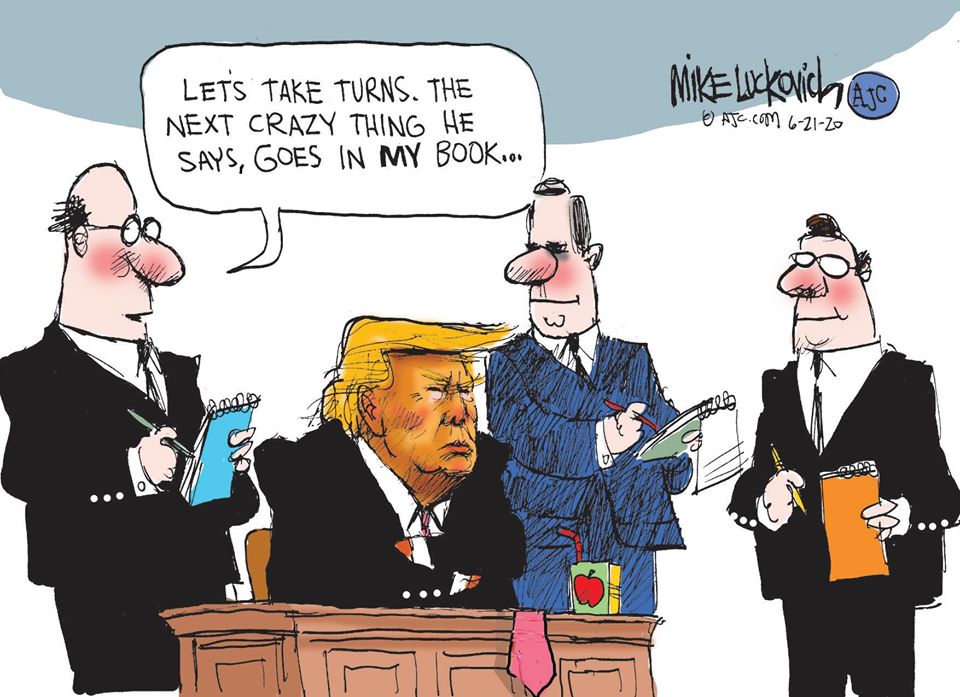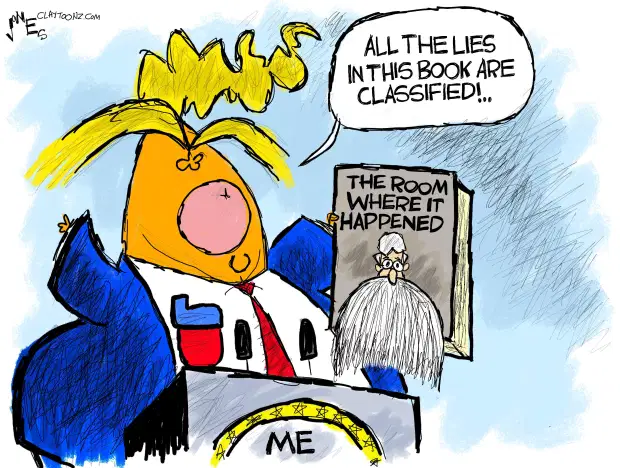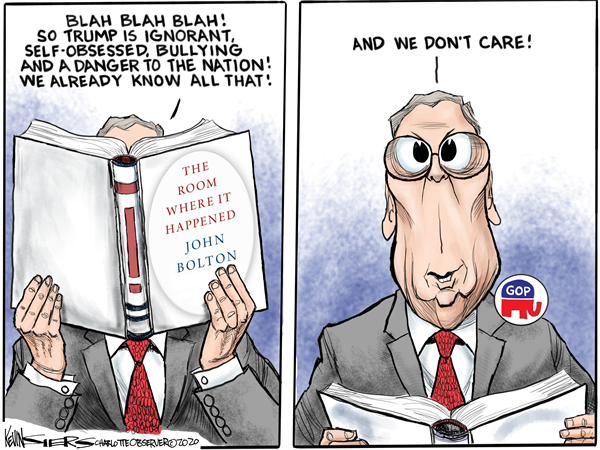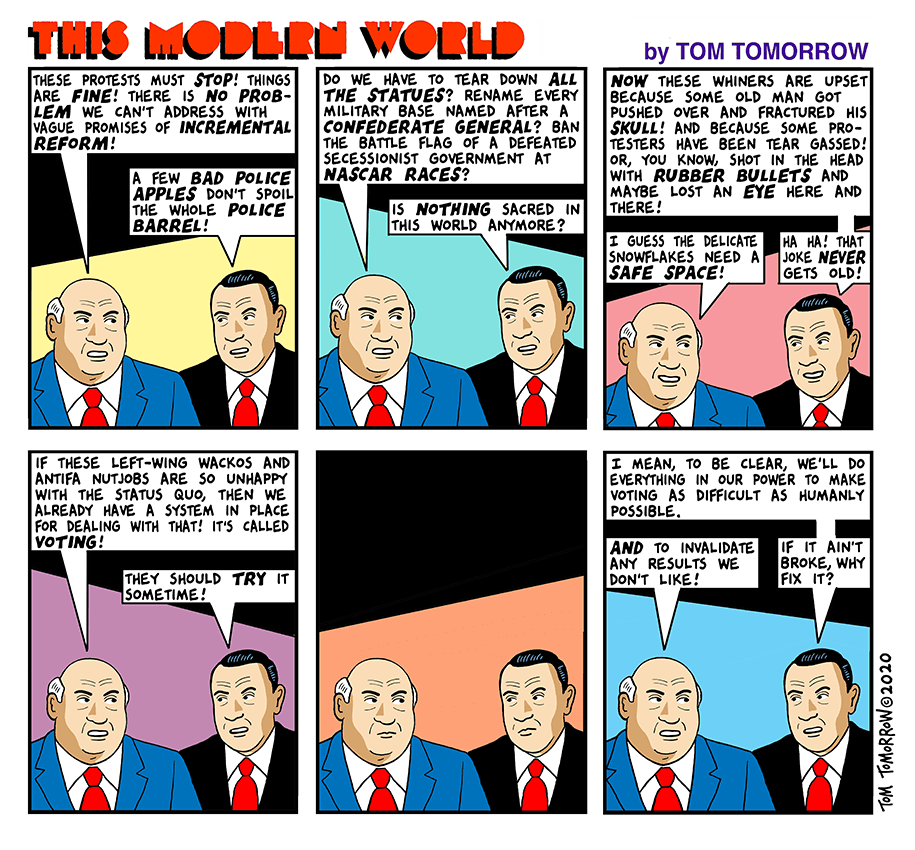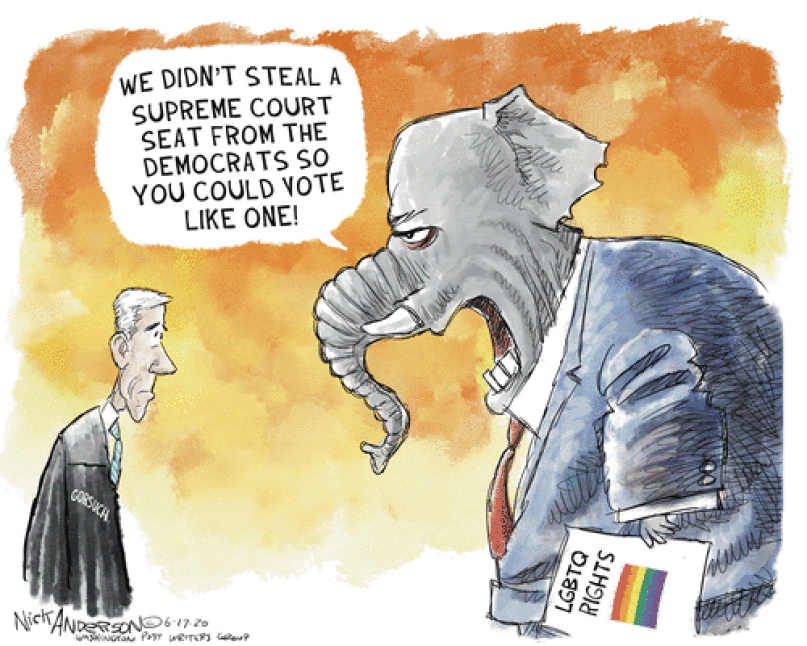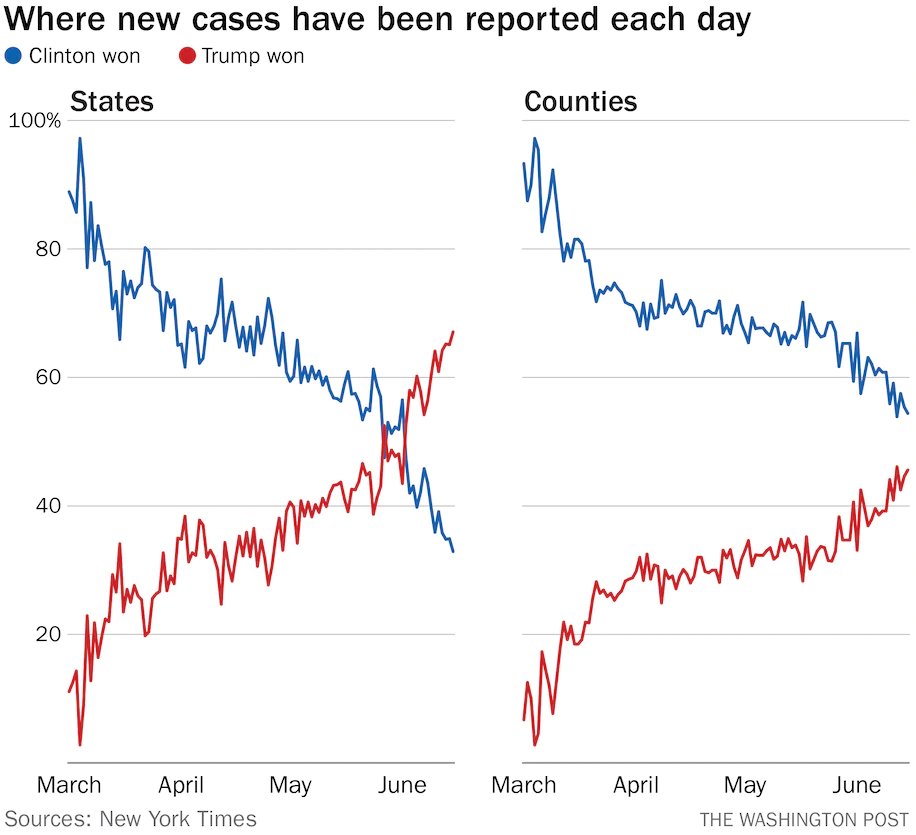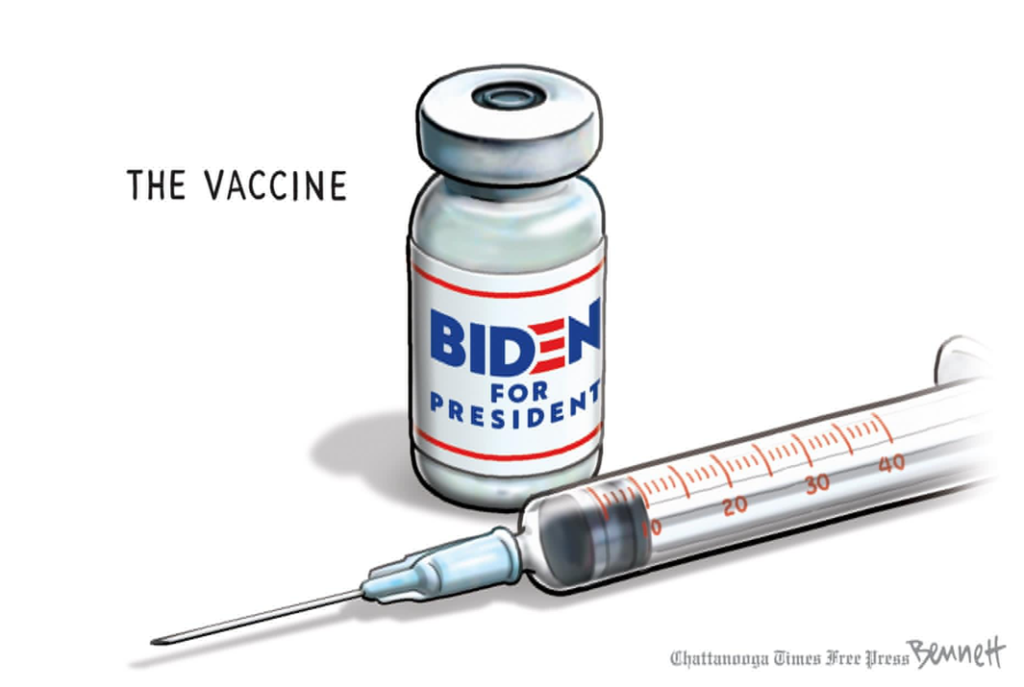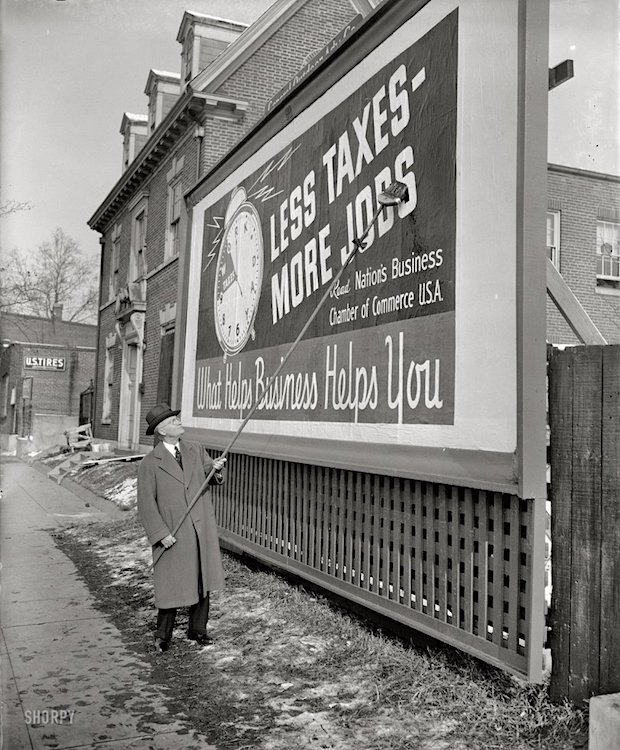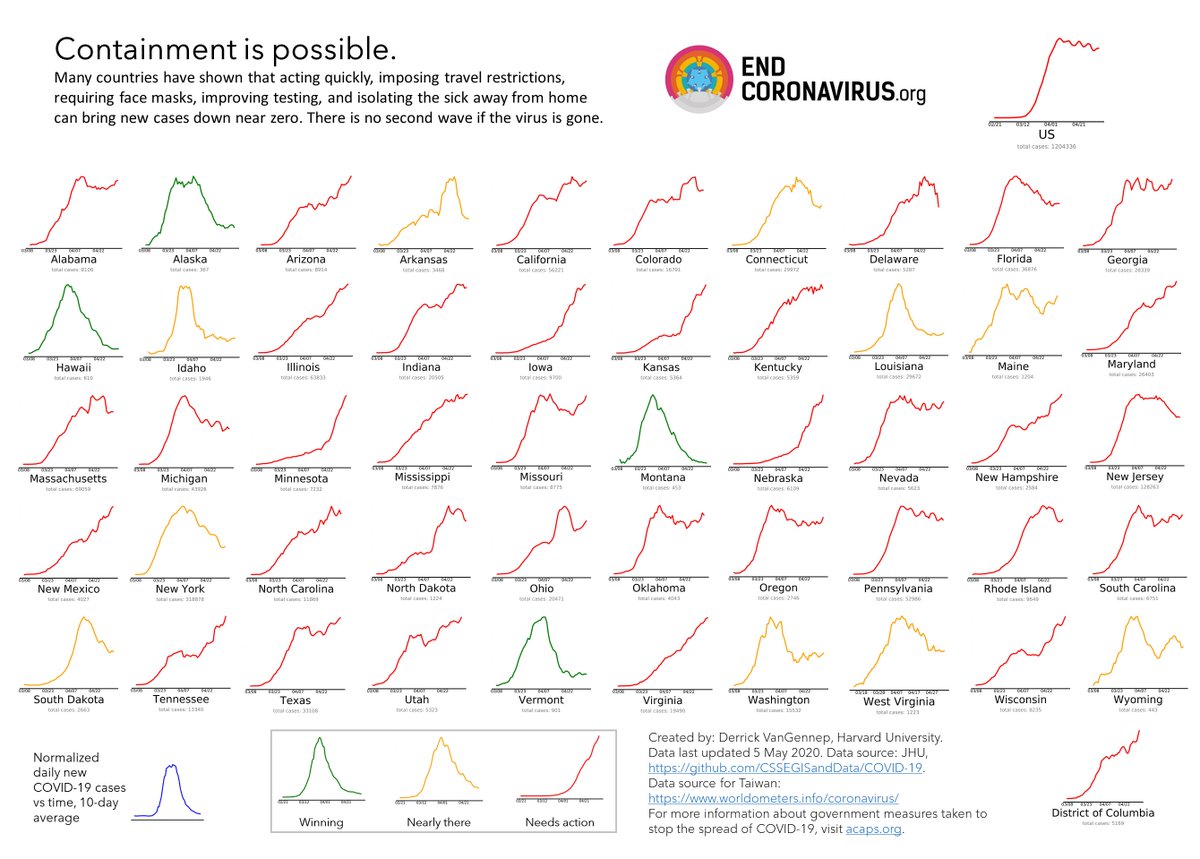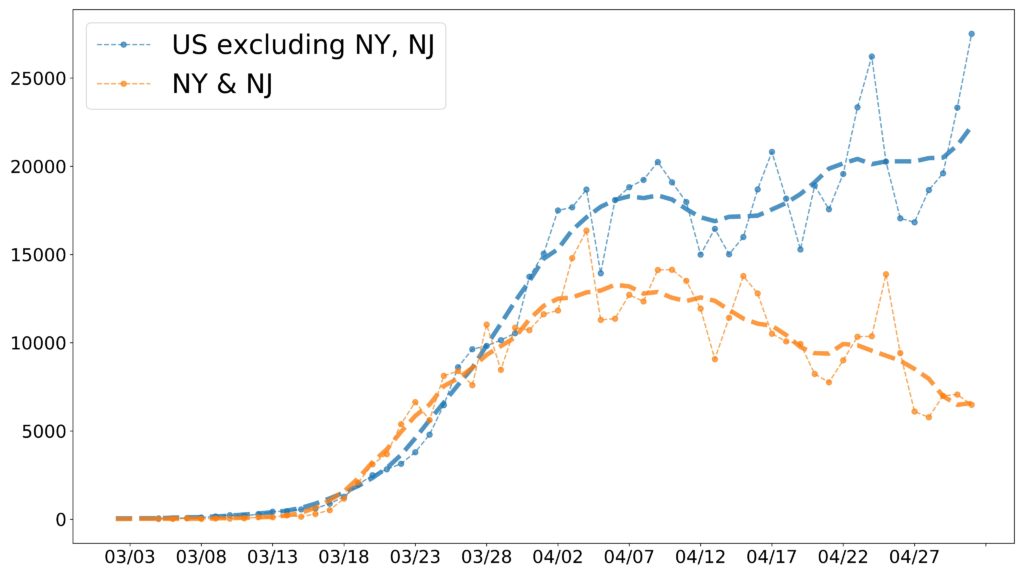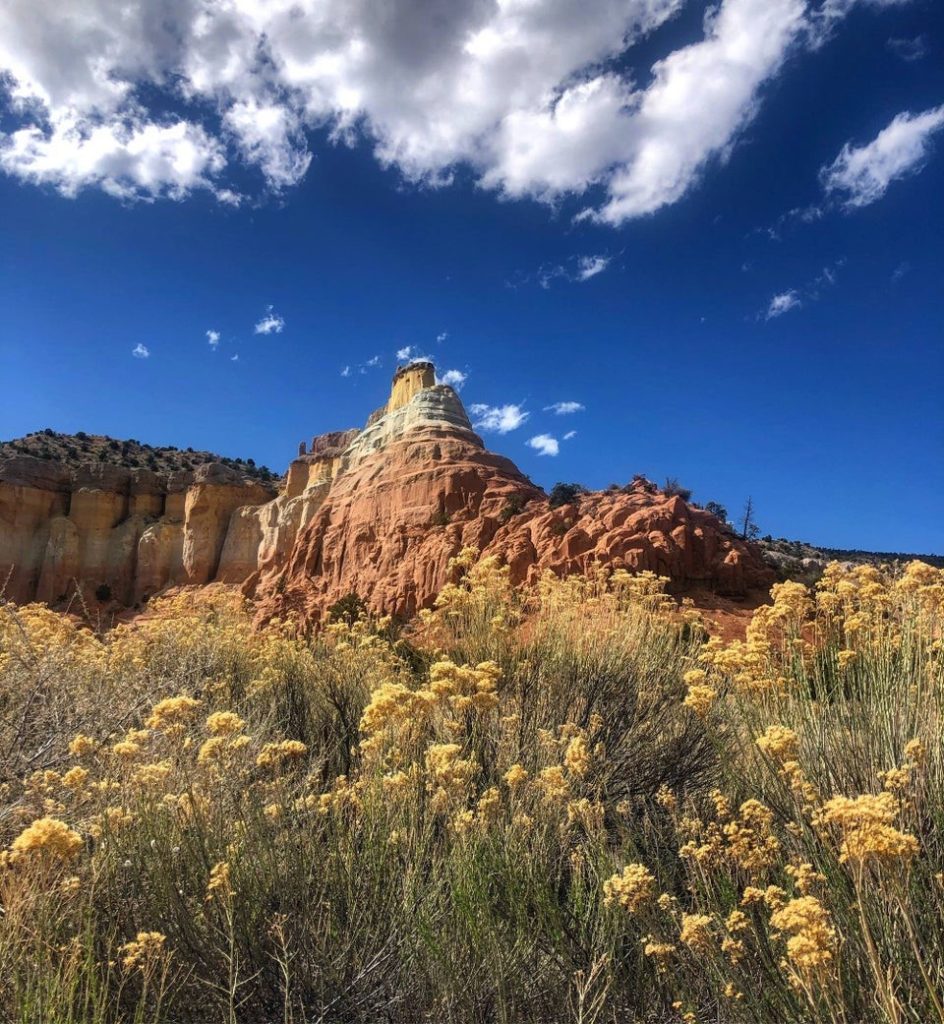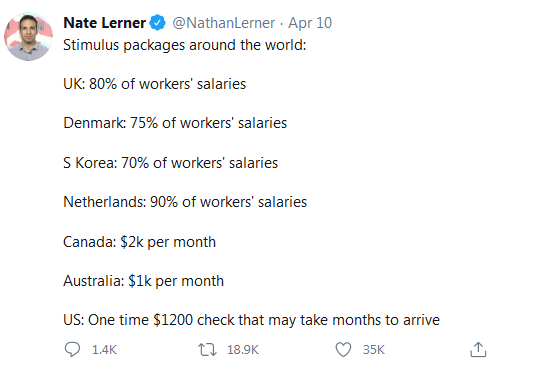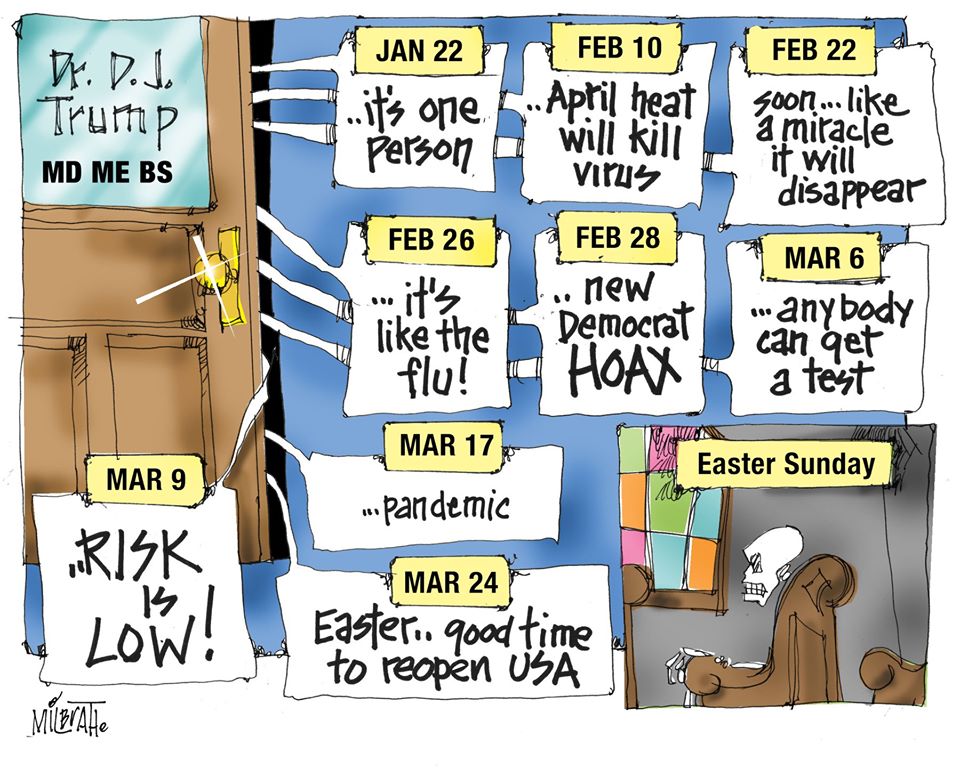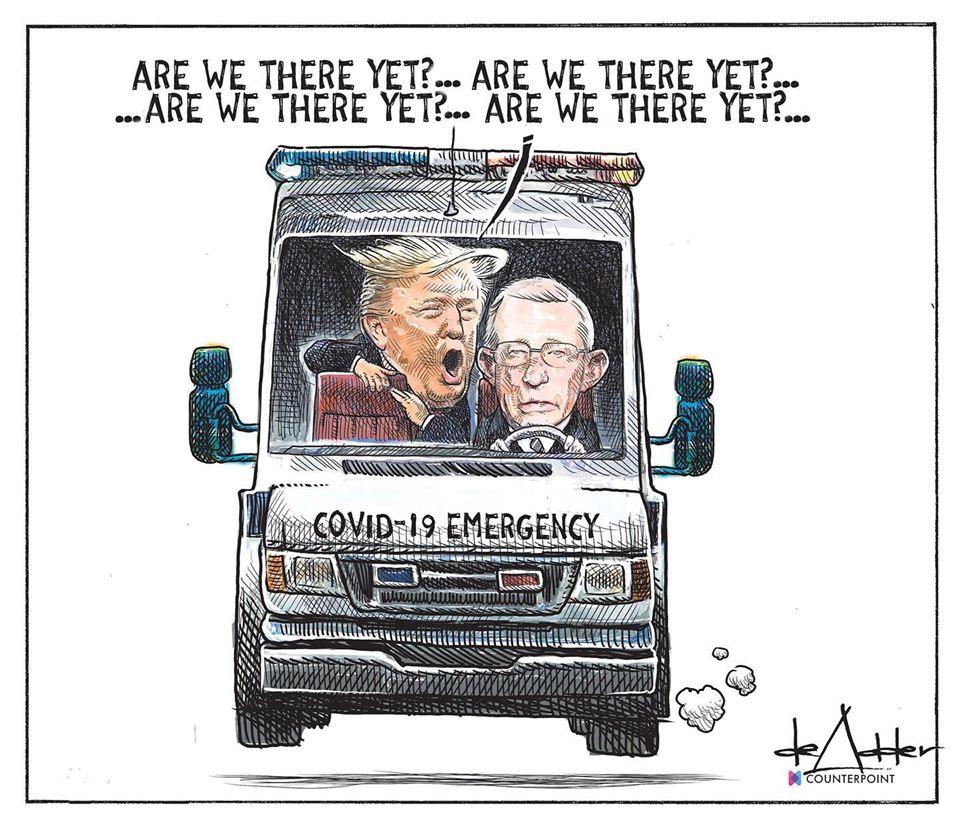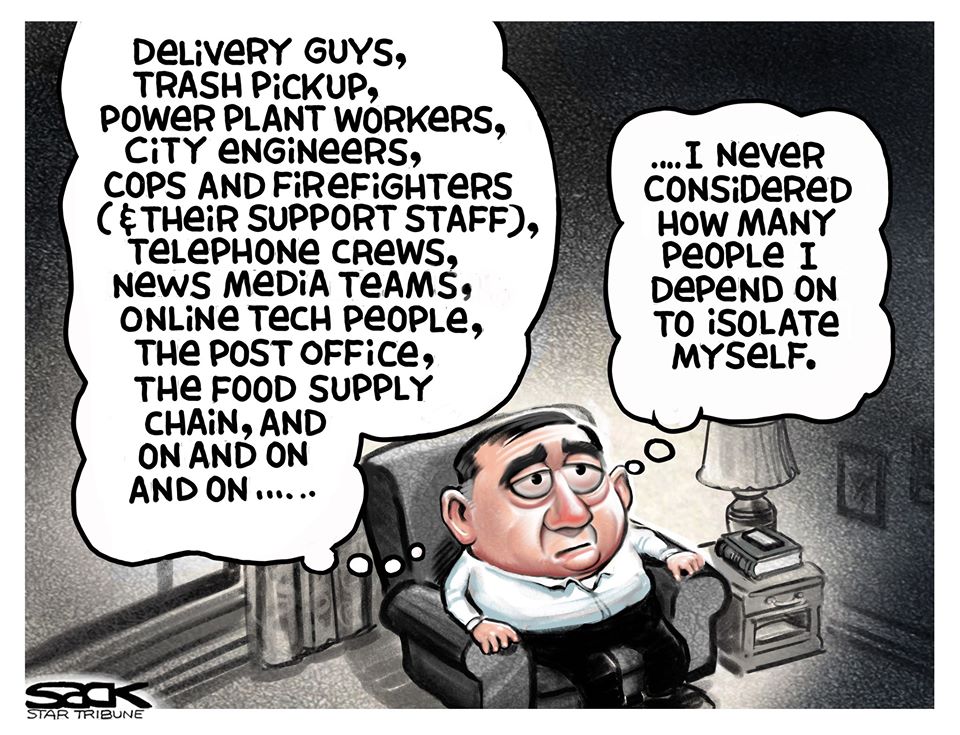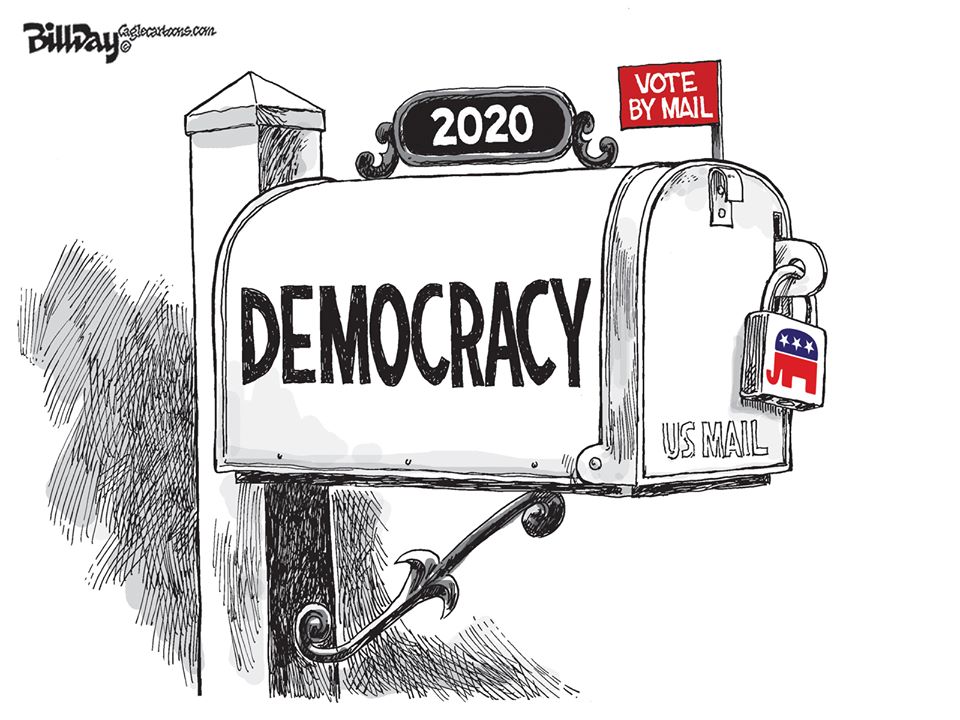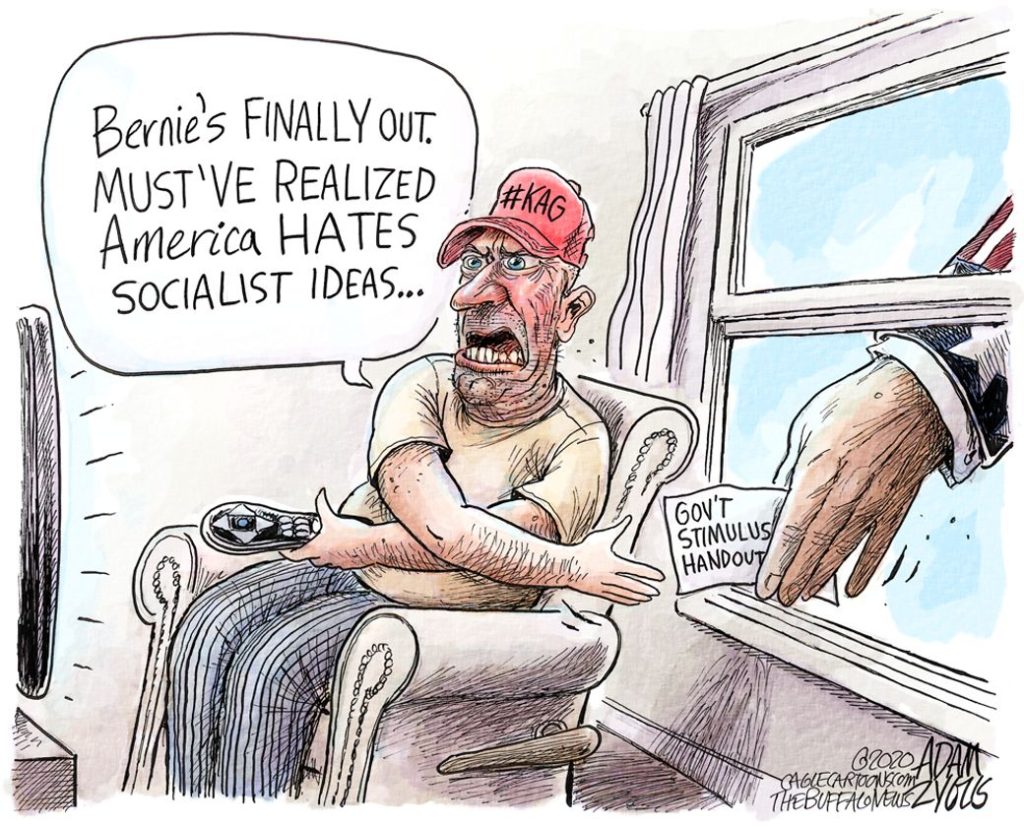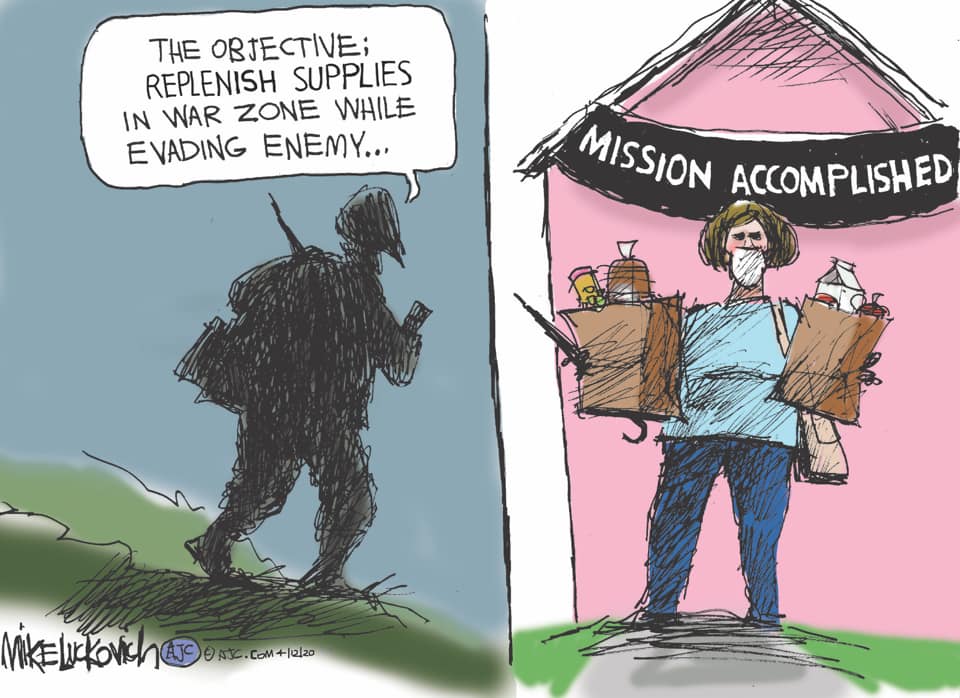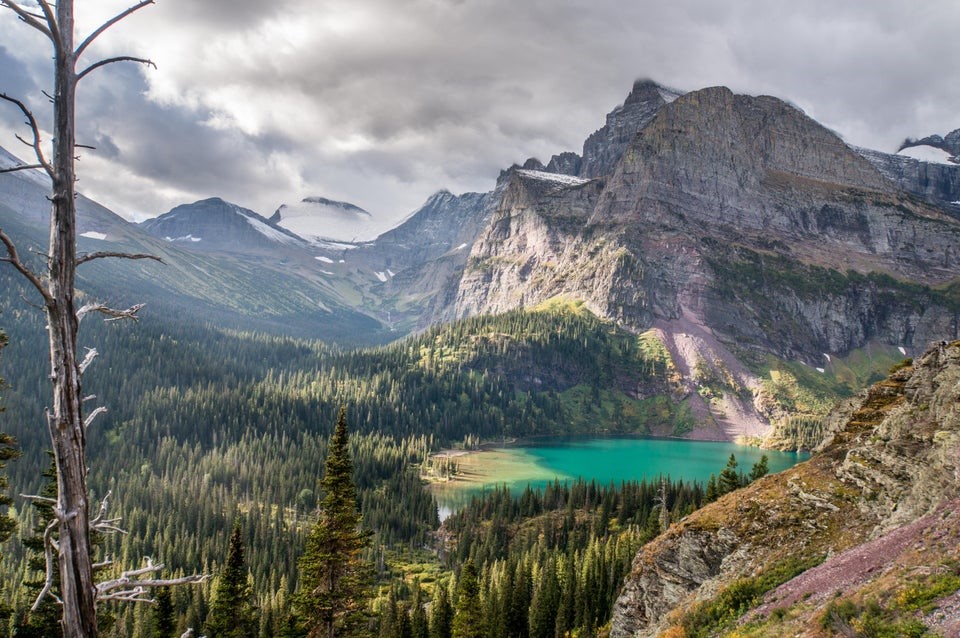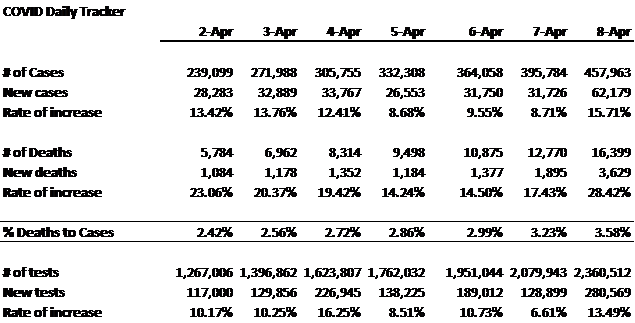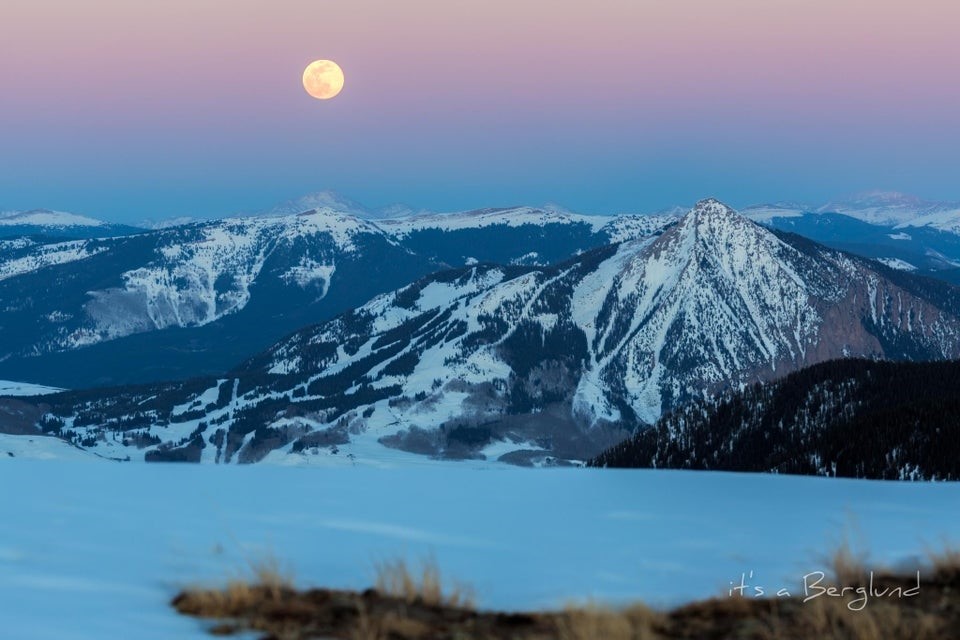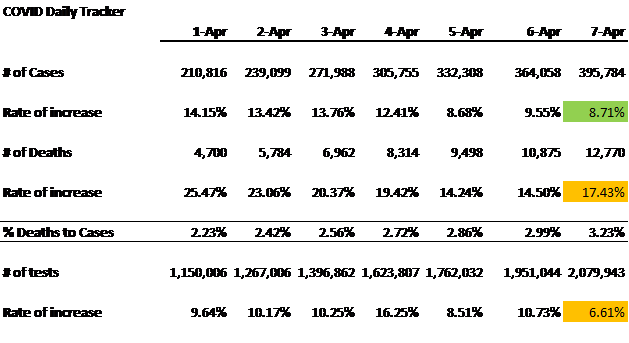The Daily Escape:

Sunrise, Mauna Kea, HI – 2020 photo by laramarie27
Here’s the COVID-19 tracking report as of April 12:
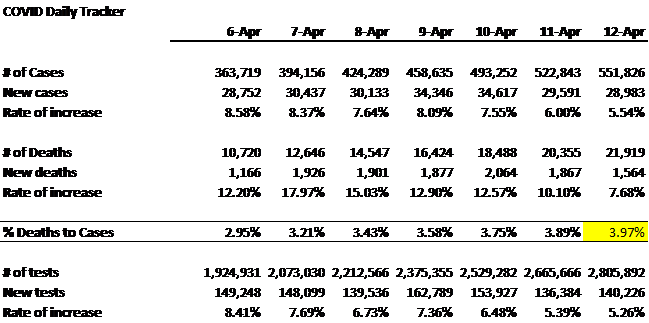
The rate of increase in infections and deaths appear to have plateaued, while deaths as a percentage of cases continues to rise. Testing hovers around 140,000 per day, still growing slower than the rate of new infections.
The next chart seems to indicate that opening the lockdown would be a mistake. The impression is that the rest of the country isn’t doing as badly as New York. Here is a comparison of cases in New York to cases in the rest of the US:
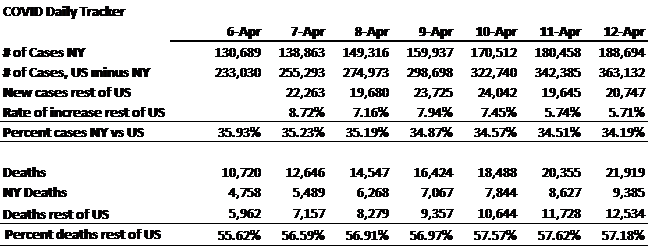
On the 12th, infections in the rest of the US started to grow faster than new infections in NY. The rate of new deaths in the rest of the US has also become a larger share of total US deaths. So far, there is little evidence to conclude that the administration should reverse the lockdown strategies of the states.
Today we continue with yesterday’s question, “what’s next?”
When parts of the US, and eventually all of it come out from physical and economic quarantine, we will attempt to return to “normal”. Normal will bring with it a level of economic devastation, bankruptcy, and household impoverishment that will almost certainly be beyond what politicians can now imagine.
To bridge across to a sustained level of economic activity, the Federal government and the Federal Reserve will have to add substantial stimulus beyond the $2 trillion so far, possibly an additional $5+ trillion, in new stimulus.
Most of those new funds will have to go to individuals and small businesses in the form of outright grants. Otherwise, small and medium size firms will not be able to reopen their doors after a prolonged shutdown.
Grants to individuals will be most important. Renters and homeowners will have no means to become current on back rent and mortgage payments. Without these funds, the impact within the financial sector will exceed that of the Great Recession, as rents and mortgages would go unpaid for months. Foreclosures and evictions would skyrocket.
Local and state governments that rely on tax revenue from sales taxes, income taxes, real estate and property taxes will be deeply affected as well.
Bipartisan talk in DC of a new effort to create $2 trillion in infrastructure funding makes sense as a source of jobs and needed economic revival. It will also jump start the downstream suppliers of steel, cement and heavy equipment.
The Federal government may have to take equity stakes in large companies like it did in the 2008 auto bailout. In a fashion, this will make the US look a lot more “socialist” than it did in 2019.
There will also be psychological fallout that will be difficult to anticipate. Axios thinks the Coronavirus may be a defining experience for Generation Z, shaping its outlook for decades to come, disrupting its entry to adulthood and altering its earning potential, trust in institutions and views on family and sex.
Pew Research says that nearly half of workers ages 16-24 held service jobs in bars, restaurants and hotels — many of which have now been shut down or greatly scaled back. And young workers with less experience are the first to be let go.
Nearly 25% of US workers, 38.1 million out of 157.5 million, are employed in industries most likely to feel an immediate impact from the COVID-19 lockdown. Among the most vulnerable are workers in retail trade (10% of all workers) and food services and drinking places (6%). In total, these two industries employ nearly 26 million Americans. More from Pew:
“Workers in these industries have lower-than-average earnings. Across all industries, the average weekly earnings in January 2020 were $975. By contrast, workers in food services and drinking places earned only $394 per week on average. Workers in the other high-risk industries had earnings ranging from around $500 to $600 per week.”
Hence the need for a financial bridge by the federal government.
Part of the new normal must be adequate inventory of medical supplies to deal with any future replay of the Coronavirus or another pandemic. The NYT reports that China today makes about 80% of the world’s antibiotics, along with the building blocks for a long list of drugs. That supply can be shut off at any time, for any reason. It is now painfully obvious that health care must be a primary national security concern, something our politicians were blind to just a few months ago.
Will these, and other necessary things change?
So far, we have a redux of 2008. The Fed and Treasury have decided to bailout speculative capital and big corporations, let small businesses fail, and let the working poor employed by small business to become even more impoverished.
Will there be a Marshall Plan for us?


